Sunday, November 4, 2007
Mount Zion
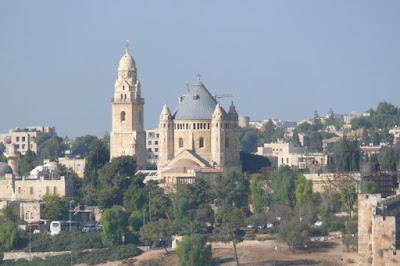 Mount Zion, as seen from the mount of olives.
Mount Zion, as seen from the mount of olives. These guys on the roof made for a nice picture
These guys on the roof made for a nice picture This is a carob tree (photo by Theresa). We were waiting in the shade for another group to move out of the area that we were going to. Ben fiddled a bit with the seed pods and it made a clicking sound. He said "the food of Yochanan the Immerser" (John the Baptist). According to Ben, the pods of the carob tree were called locusts.
This is a carob tree (photo by Theresa). We were waiting in the shade for another group to move out of the area that we were going to. Ben fiddled a bit with the seed pods and it made a clicking sound. He said "the food of Yochanan the Immerser" (John the Baptist). According to Ben, the pods of the carob tree were called locusts.
We went to the upper room but it is only in the right area, the room is actually from the Crusader period.
Jewish Quarter
 We walked back to the Jewish Quarter. There is a Jewish, Armenian, Muslim and Christian Quarter in the old city, and they are all quite different.
We walked back to the Jewish Quarter. There is a Jewish, Armenian, Muslim and Christian Quarter in the old city, and they are all quite different. 
 The Jewish quarter is more open.
The Jewish quarter is more open.Apparently this is because it was bombed more severely.
When they cleaned everything up they decided to do some excavations, and found the Cardo.
 This is the Cardo, the main street in the Roman period. It is low because over time the city was built on top of it.
This is the Cardo, the main street in the Roman period. It is low because over time the city was built on top of it....and girls
In the Old City
This was the way we counted to make sure that all of the group members were present. It worked quite well.
Western Wall
 One of the most well known sites in Jerusalem is the western wall. It is the wall closest to where the Temple once stood. The bottom 6 rows of big stones are from the first century. On the edges of the stones you can still see the Herodian edging.
One of the most well known sites in Jerusalem is the western wall. It is the wall closest to where the Temple once stood. The bottom 6 rows of big stones are from the first century. On the edges of the stones you can still see the Herodian edging.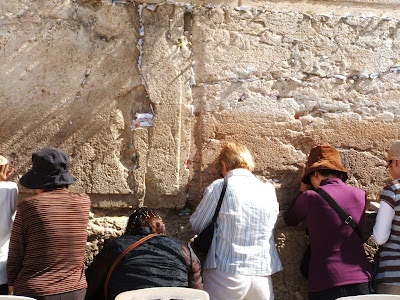
For many it is a very special site.
 Theresa made a picture through the fence.
Theresa made a picture through the fence. Washing hands
Washing hands Allan is putting on tefillin. Based on Deut 6:8 where it says to bind God's commands "as symbols on your hands".
Allan is putting on tefillin. Based on Deut 6:8 where it says to bind God's commands "as symbols on your hands". Josh took this picture
Dung Gate
 This is the pretty-looking Dung Gate. Apparently, named because that was the way all the rubbish was taken out of Jerusalem and into the Hinom valley.
This is the pretty-looking Dung Gate. Apparently, named because that was the way all the rubbish was taken out of Jerusalem and into the Hinom valley.
Faith Lesson:
The Hinom valley is the valley where all the garbage was dumped. It is a "picture" of hell. Mark 9:48, "their worm does not die and the fire is not quenched."

We didn't go through the nice gate but through a "hole in the wall" These walls are from the 16th century, but they are built on top of older walls that were leveled during one of the many wars.
Subscribe to:
Comments (Atom)









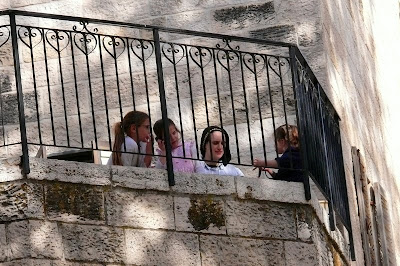



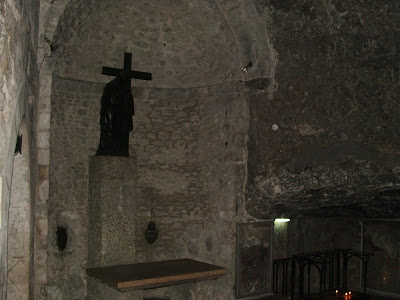









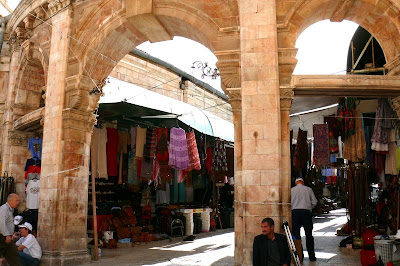













 View of the many graves on the mount of olives
View of the many graves on the mount of olives
